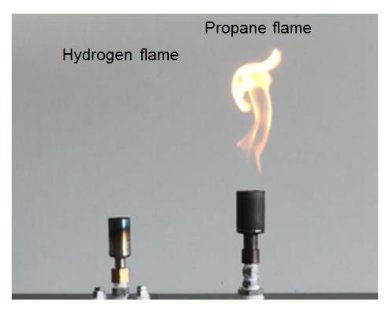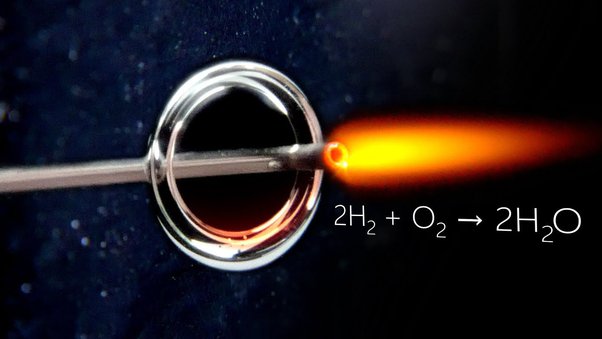Make water by combining hydrogen and oxygen
#The Chemical Reaction#
Water, a fundamental substance for life on Earth, has the chemical formula H₂O, signifying two hydrogen atoms bonded to one oxygen atom. This formation occurs naturally through a process involving the combination of hydrogen and oxygen gases. While this sounds straightforward, the actual process involves intricate chemical reactions, energy considerations, and safety precautions.The creation of water from hydrogen and oxygen is described by the chemical equation:\[ 2H_2 + O_2 \rightarrow 2H_2O \]This energy release is substantial and can be hazardous if not controlled properly.For the reaction between hydrogen and oxygen to commence, an initial input of energy, known as activation energy, is required. This can be provided by a spark or flame, which supplies the energy needed to break the bonds of the hydrogen and oxygen molecules. Once these bonds are broken, the atoms can recombine to form water, releasing a significant amount of energy.#The Explosive Nature of the Reaction#
The reaction between hydrogen and oxygen gases is highly explosive. When mixed in the right proportions and ignited, the reaction occurs rapidly, producing a large volume of water vapor and a considerable amount of heat and pressure. This explosive potential is a key reason why hydrogen and oxygen are used as rocket fuel; the rapid release of energy can propel rockets into space.
Due to the explosive nature of the reaction, strict safety measures are necessary when attempting to combine hydrogen and oxygen to make water. In controlled environments like laboratories or industrial settings, specific protocols and equipment are used to safely manage the reaction. This includes the use of proper containment vessels, ignition sources, and protective gear to prevent accidental explosions.
Hydrogen, the simplest and lightest element, was formed shortly after the Big Bang and is the primary building block of stars, including our sun. Through nuclear fusion processes within stars, hydrogen atoms combine to form helium and release vast amounts of energy. Oxygen, on the other hand, is produced in the later stages of stellar evolution and is released into space when stars explode as supernovae. These elements eventually combine in various celestial processes, contributing to the formation of water in interstellar clouds, comets, and planets.
#Practical Methods of Combining Hydrogen and Oxygen#
Hydrogen, the simplest and lightest element, was formed shortly after the Big Bang and is the primary building block of stars, including our sun. Through nuclear fusion processes within stars, hydrogen atoms combine to form helium and release vast amounts of energy. Oxygen, on the other hand, is produced in the later stages of stellar evolution and is released into space when stars explode as supernovae. These elements eventually combine in various celestial processes, contributing to the formation of water in interstellar clouds, comets, and planets.
#Practical Methods of Combining Hydrogen and Oxygen#
 In industrial settings, the synthesis of water from hydrogen and oxygen is often carried out using controlled processes such as the catalytic recombination method. This method involves using a catalyst, such as platinum, to lower the activation energy required for the reaction, allowing it to proceed at a safer, more controlled rate. This approach is used in various applications, including fuel cells, where hydrogen and oxygen are combined to produce electricity, water, and heat.In nature, water is formed through various processes, including the combination of hydrogen and oxygen during the combustion of organic matter and in various chemical reactions in the atmosphere. For example, during the combustion of hydrocarbons, hydrogen atoms combine with oxygen to form water vapor as a byproduct. Additionally, water is continuously cycled through the environment in processes such as evaporation, condensation, and precipitation, ensuring its availability for sustaining life.Water’s significance extends far beyond its chemical composition. It is a vital component of all known forms of life, playing crucial roles in biological processes such as digestion, nutrient transport, temperature regulation, and waste elimination. Its unique properties, such as high heat capacity, solvent capabilities, and surface tension, make it indispensable for life as we know it.
In industrial settings, the synthesis of water from hydrogen and oxygen is often carried out using controlled processes such as the catalytic recombination method. This method involves using a catalyst, such as platinum, to lower the activation energy required for the reaction, allowing it to proceed at a safer, more controlled rate. This approach is used in various applications, including fuel cells, where hydrogen and oxygen are combined to produce electricity, water, and heat.In nature, water is formed through various processes, including the combination of hydrogen and oxygen during the combustion of organic matter and in various chemical reactions in the atmosphere. For example, during the combustion of hydrocarbons, hydrogen atoms combine with oxygen to form water vapor as a byproduct. Additionally, water is continuously cycled through the environment in processes such as evaporation, condensation, and precipitation, ensuring its availability for sustaining life.Water’s significance extends far beyond its chemical composition. It is a vital component of all known forms of life, playing crucial roles in biological processes such as digestion, nutrient transport, temperature regulation, and waste elimination. Its unique properties, such as high heat capacity, solvent capabilities, and surface tension, make it indispensable for life as we know it.#Conclusion#
Creating water by combining hydrogen and oxygen is a fascinating chemical process that showcases the principles of chemistry and physics. While the reaction itself is straightforward in theory, practical implementation requires careful consideration of energy dynamics and safety precautions due to its highly exothermic and explosive nature. Understanding this process not only highlights the intricate dance of atoms and molecules but also underscores the essential role of water in sustaining life on Earth. From industrial applications to natural processes, the combination of hydrogen and oxygen to form water continues to be a fundamental aspect of both science and daily life.
Click here more site>>>>>>>>>Enjoy in gurugram



.jpg)


Comments
Post a Comment